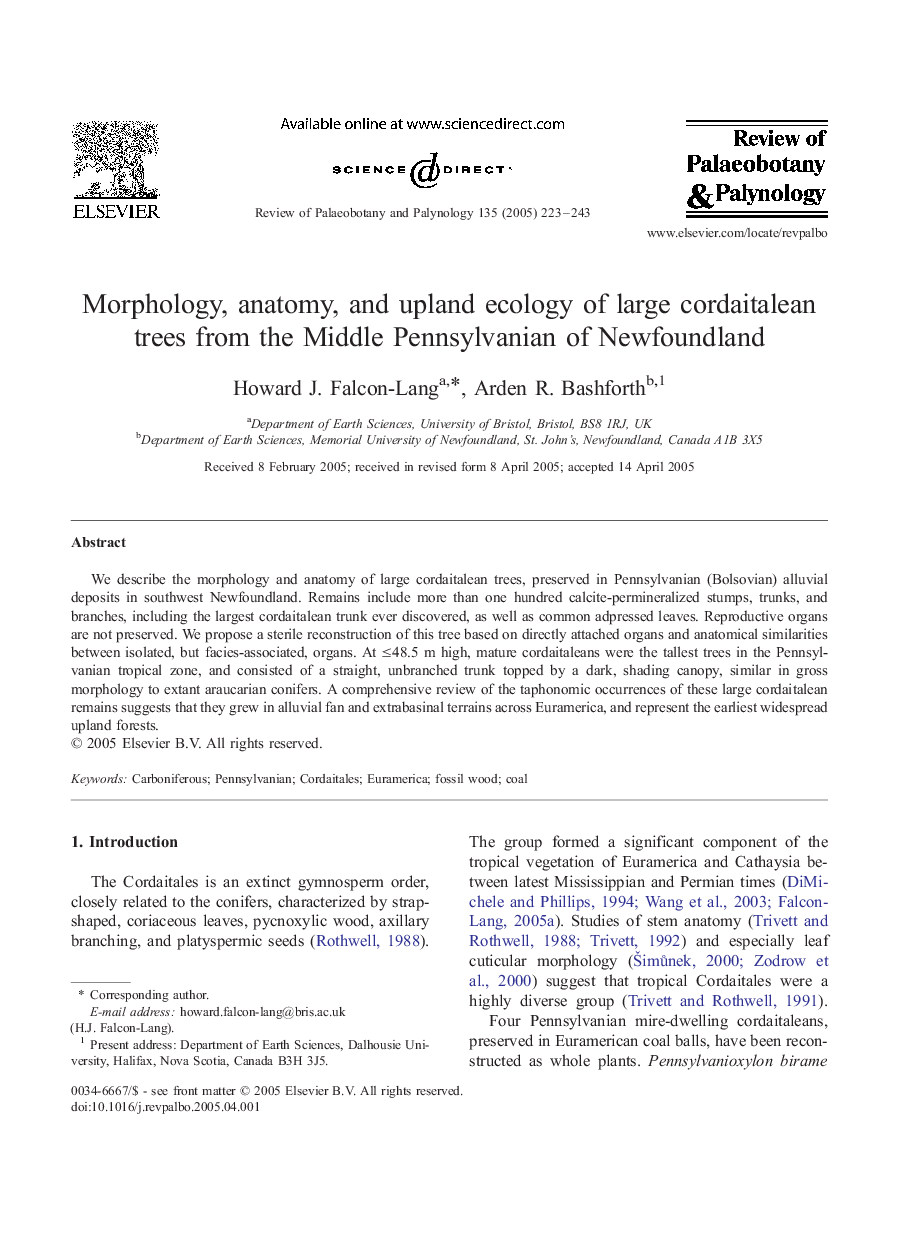| Article ID | Journal | Published Year | Pages | File Type |
|---|---|---|---|---|
| 10122068 | Review of Palaeobotany and Palynology | 2005 | 21 Pages |
Abstract
We describe the morphology and anatomy of large cordaitalean trees, preserved in Pennsylvanian (Bolsovian) alluvial deposits in southwest Newfoundland. Remains include more than one hundred calcite-permineralized stumps, trunks, and branches, including the largest cordaitalean trunk ever discovered, as well as common adpressed leaves. Reproductive organs are not preserved. We propose a sterile reconstruction of this tree based on directly attached organs and anatomical similarities between isolated, but facies-associated, organs. At â¤Â 48.5 m high, mature cordaitaleans were the tallest trees in the Pennsylvanian tropical zone, and consisted of a straight, unbranched trunk topped by a dark, shading canopy, similar in gross morphology to extant araucarian conifers. A comprehensive review of the taphonomic occurrences of these large cordaitalean remains suggests that they grew in alluvial fan and extrabasinal terrains across Euramerica, and represent the earliest widespread upland forests.
Related Topics
Physical Sciences and Engineering
Earth and Planetary Sciences
Palaeontology
Authors
Howard J. Falcon-Lang, Arden R. Bashforth,
